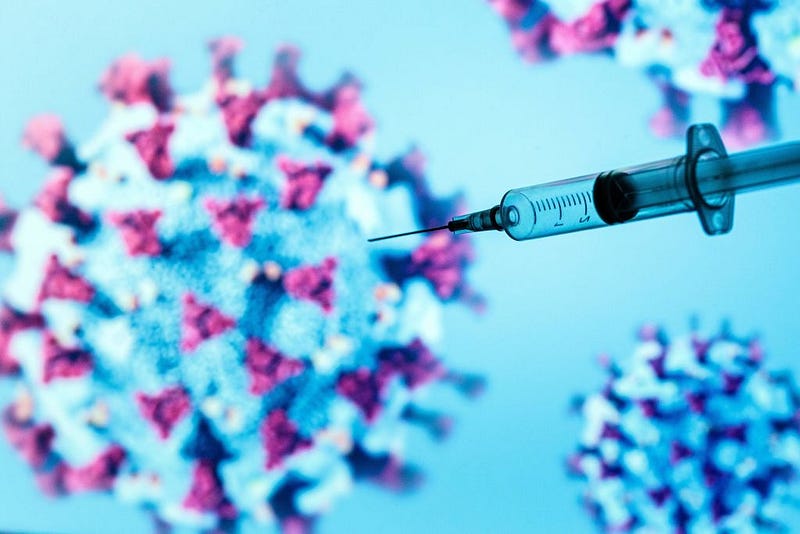New Era of Vaccines: How Pfizer and Moderna Are Leading Change
Written on
Chapter 1: Introduction to Revolutionary Vaccines
The recent announcements by Pfizer and its German biotech collaborator BioNTech, revealing that their Covid-19 vaccine demonstrates over 90% effectiveness in clinical trials, have ignited optimism for an end to the pandemic. Shortly after, Massachusetts-based Moderna reported an impressive 94.5% efficacy for its vaccine. Pfizer later shared updated findings showing a 95% effectiveness rate.
The positive news sent their stock prices soaring. Dr. Anthony Fauci, director of the National Institute of Allergy and Infectious Diseases, referred to these results as “highly impressive,” indicating that by late December or early January, up to 20 million Americans might receive the vaccine if the Food and Drug Administration grants approval. If authorized, these vaccines would represent a groundbreaking advancement in vaccine technology.
Typically, vaccine development spans a decade or longer. However, delivering a Covid-19 vaccine within a year would be a remarkable scientific achievement. Additionally, the genetic technology used by Pfizer and Moderna offers insight into future vaccine development strategies against emerging infectious diseases.

Chapter 2: The Evolution of Vaccine Production
The conventional process for creating vaccines is often intricate, costly, and lengthy. It typically involves cultivating a virus or pathogen in animal cells or chicken eggs, which can take several months. Following this, the pathogen is either killed or weakened to prevent infection. The vaccine then undergoes rigorous purification and safety testing.
In contrast, the vaccines from Pfizer and Moderna utilize a novel technique. Rather than employing the actual pathogen or its components, they leverage a small segment of genetic material known as messenger RNA (mRNA). This mRNA carries instructions that prompt the body to produce a protein similar to that of SARS-CoV-2, the virus responsible for Covid-19. The immune system recognizes this protein as foreign, triggering an immune response and the production of protective antibodies.
A few other companies, including Inovio Pharmaceuticals and Novavax, are exploring DNA-based vaccines, which operate on a similar principle.
Section 2.1: Advantages of mRNA Vaccines
One significant advantage of this method is that it eliminates the need to cultivate the actual pathogen. All that is required is its genetic blueprint. Recent advancements in genome sequencing have made it faster and more cost-effective to generate this blueprint. After China reported a cluster of pneumonia cases, researchers quickly posted the novel coronavirus's draft genome online, enabling Moderna and BioNTech to commence vaccine development almost immediately.
“Within a week, if the pathogen is identified, you can synthesize the RNA and initiate testing,” explains Drew Weissman, MD, PhD, an RNA vaccine expert at the University of Pennsylvania. His lab played a key role in developing the technology used by Moderna.
Subsection 2.1.1: The Potential of Genetic Vaccines
The concept of genetic vaccines emerged nearly 30 years ago, with ongoing efforts to refine this technology. While some early attempts were unsuccessful, the promising results from Pfizer and Moderna may inspire further research into genetic vaccine approaches.
These vaccines are particularly adaptable; by simply changing the genetic material, scientists can quickly pivot to address new viral threats. Margaret Liu, MD, a pioneer in genetic vaccines, compares this adaptability to creating various ice cream flavors once the fundamental recipe is mastered.
Furthermore, the production of DNA and RNA is less expensive than traditional vaccine components, requiring only small amounts to create genetic vaccines. This efficiency could allow for faster scaling of production compared to conventional methods.
Section 2.2: Looking Ahead
Although it will take time to monitor the long-term effectiveness and durability of the protection offered by Pfizer and Moderna’s vaccines, their success could not only contribute to overcoming the current pandemic but also herald a new era in vaccine development. The timeline for creating vaccines could shrink from years to mere months, enhancing our preparedness for future infectious disease outbreaks.
As Rahul Gupta, MD, senior vice president and chief medical and health officer at the March of Dimes, noted, “We may be on the verge of a significant technological shift in how vaccines are produced.”
In conclusion, the innovations introduced by Pfizer and Moderna have the potential to reshape the landscape of vaccine development, providing a blueprint for rapid responses to future health crises.